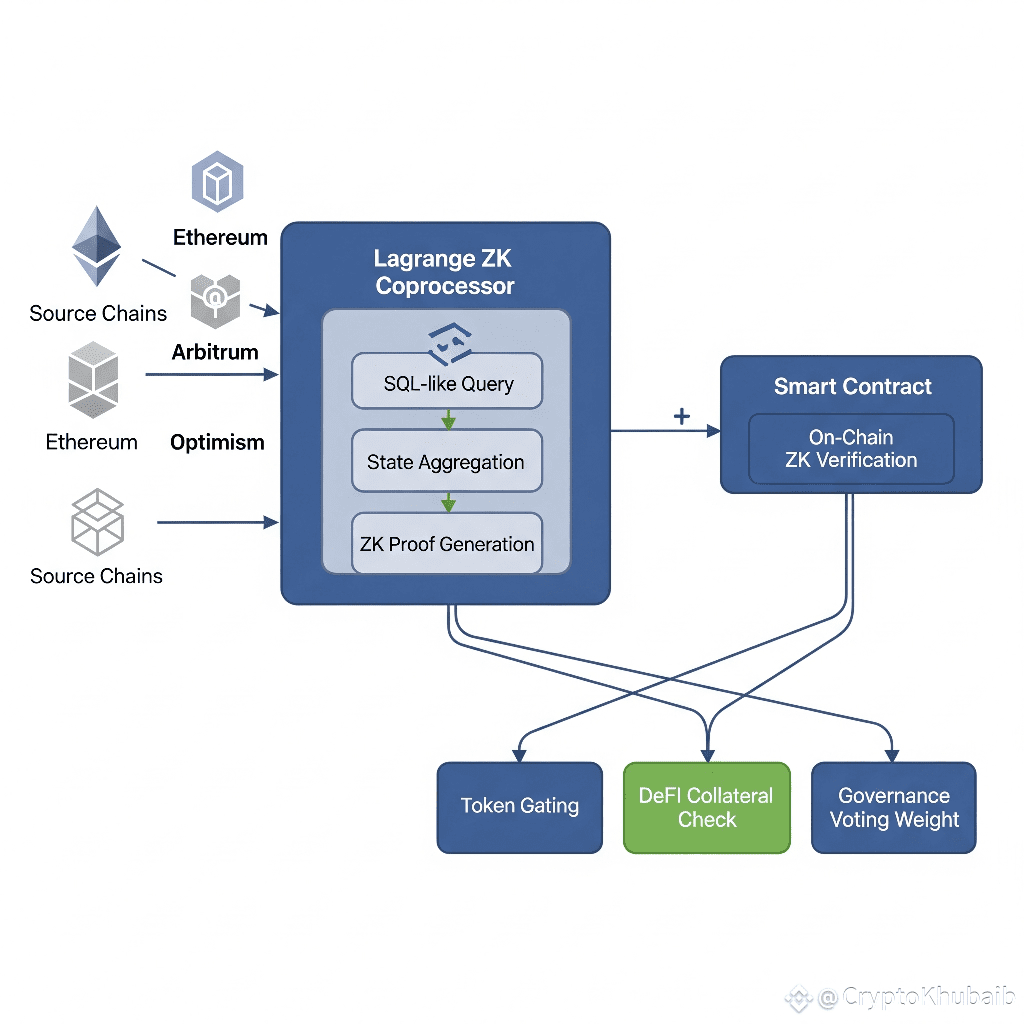In the evolving modular blockchain ecosystem, the need for trustless, scalable, and interoperable data access has never been more critical. Projects are increasingly fragmented across rollups, L1s, and L2s, each with their own state data and constraints. This makes secure cross-chain data querying a key challenge — and Lagrange is addressing it head-on.
🛠️ What is Lagrange?
Lagrange is a zero-knowledge coprocessor that enables modular blockchains and smart contracts to query, compute, and verify external data — all while maintaining full on-chain verifiability.
Unlike oracles or centralized bridges that rely on trust assumptions, Lagrange uses ZK-SNARKs to allow verifiable computation over off-chain data. This means blockchains can access provable insights from other chains without compromising decentralization or security.
🔧 How Lagrange Works: Step-by-Step Breakdown
1. Query Definition
Developers define SQL-like queries targeting specific state data across chains.
2. Data Aggregation
The Lagrange coprocessor fetches data (block headers, balances, states) from target chains.
3. ZK Proof Generation
Using off-chain computation, Lagrange generates succinct ZK-SNARK proofs of the query result.
4. On-chain Verification
The ZK proof is verified by a smart contract, confirming the accuracy and integrity of the result on-chain.
This architecture enables lightweight, gas-efficient, and secure access to data across chains, enabling truly modular dApps.
🧩 Use Cases: What Can Lagrange Enable?
1. Cross-chain Governance
Voting power on Ethereum can influence decisions on a Cosmos appchain — verified via ZK proof.
2. Cross-chain DeFi Positioning
Lending protocols on one chain can access collateral data from another chain — without trust assumptions.
3. Token Gating & Access Control
NFTs or tokens held on another chain can be proven to exist and used to unlock content or rights on a different chain.
4. Rollup State Attestations
Lagrange can fetch and prove Merkle root data, enabling rollups to inherit security and data access from other chains.
🌍 Future Outlook and $LA Token Utility
Lagrange’s $LA token plays a critical role in the network's decentralization and economic model. It is used for:
Staking by data providers.
Query payment and prioritization.
Governance participation.
Incentivizing network security.
As demand grows for modular and interoperable chains, so will the need for scalable ZK-based query infrastructure. This positions Lagrange — and $LA — at the heart of blockchain composability.
🧠 Final Thoughts
With the rise of ZK rollups, modular chains, and cross-chain dApps, Lagrange is a foundational infrastructure piece for the next phase of crypto. It brings enterprise-grade verifiability, low latency, and permissionless access to any chain's state, without compromising decentralization.
In a world of fragmented chains, Lagrange unifies trustless data access.
@Lagrange Official #lagrange #Lagrange $LA




